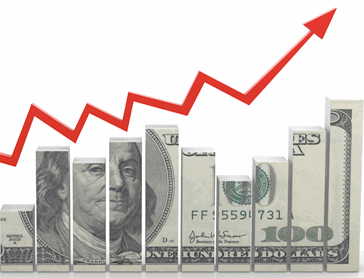Federal tax reform has emerged as a key variable in revenue growth and profitability as the U.S Property & Casualty market looks set to return to underwriting profitability for the first time since 2015, according to S&P Global Market Intelligence.

A recent report by S&P identified various factors that were supporting a return to profitability for U.S P&C re/insurers, including premium rate increases and reduced catastrophe losses.
S&P projected that the combination of underwriting improvements and a more favourable interest rate environment would lead the industry to produce a pre-tax return on statutory equity of 8.3% in 2018, up from a six-year low of less than 5.8% in 2017.
The U.S P&C industry’s effective tax rate will decline in 2018 and subsequent years due to reduction in the corporate tax rate from 35% to 21%, which took effect in 2017.
Tim Zawacki, Senior Insurance Research Analyst at S&P Global Market Intelligence, said: “The industry is poised to produce significantly stronger underwriting results in 2018 after a record year for natural catastrophes made 2017 especially challenging. However, the projected improvement in underwriting performance is not limited to an easy comparison.
“We expect that the industry will build upon the progress it has made in the personal auto business and finally see a turn in commercial auto results after several difficult years. Beyond underwriting income, we expect a lower corporate tax rate and rising interest rates will also prove beneficial to industry profits.”
The U.S P&C industry’s combined ratio jumped to a six-year high of 103.5% in 2017 due to the catastrophe losses caused by Hurricanes Harvey, Irma, and Maria, up from 100.5% in 2016.
S&P observed that U.S P&C re/insurers had already benefited from a record 14.4% growth in net premiums in the first quarter of 2018 due to the Base Erosion and Anti-Abuse tax (BEAT) reform, which targets base erosion payments by U.S companies to related foreign parties, and which caused several companies to terminate reinsurance agreements.
The report also found that direct premiums written from standalone cybersecurity and identity theft policies crossed the $1 billion mark in 2017, representing a year-over-year growth of 7.3%.
Meanwhile, the private auto business accounted for 36.6% of the industry’s total direct premiums written in 2017, but also 42.4% of its net incurred losses as the frequency and severity of claims continues to rise.
S&P noted that the State Farm Group remained the P&C primary insurance industry’s biggest player in terms of direct premiums written, producing its best first quarter underwriting result for 12 years, while Warren Buffett’s Berkshire Hathaway emerged as the largest writer of accident-and-health (A&H) business, with its $2.35 billion in A&H net premiums written representing year-over-year growth of 241.8%.


